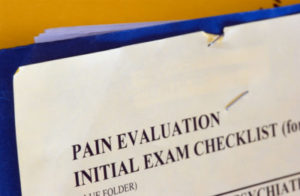
If you’ve suffered a serious personal injury in Halifax or elsewhere in Nova Scotia as a result of someone else’s negligence, you might be entitled to financial compensation. It makes sense that if someone else hurts you, you should be able to hold them responsible for their behavior.
Unfortunately, just because you’ve been injured doesn’t mean you automatically receive compensation. Proving personal injury claims can be challenging. This is why you should retain the services of an experienced personal injury lawyer. A lawyer can investigate to determine if you have a viable claim. If you do, your lawyer can negotiate for full and fair compensation for your pain and suffering and other losses.
Canadian law provides for compensation for pain and suffering for injured people. General damages for pain and suffering are intended to compensate an injured victim for the pain and suffering, loss of amenities of life, inconvenience, and loss of enjoyment of life. It can be difficult to quantify or put a dollar value on such important matters as quality of life. For that reason, they’re called general damages to reflect the fact that the money covers several aspects of the injury, but excludes the amounts needed for treatment costs, income due to missed work, or replacement of future wages.
If you were injured in an accident in Nova Scotia, it’s critical to seek legal representation as soon as possible. The Halifax personal injury lawyers at Valent Legal understand what it takes to calculate an accurate value for the pain and suffering damages you’ve suffered. If you decide to move forward with your case, Valent Legal is prepared to fight for the maximum compensation you deserve under the law.
Allow us to evaluate your case and explain your legal options during a free and confidential consultation. Our Halifax personal injury lawyers work on a contingency fee basis, which means that we don’t receive payment unless and until you obtain a financial recovery.
Call now to set up your free initial consultation.
How Is ‘Pain and Suffering’ Defined in Canada?
In Canada, when someone is injured as a result of someone else’s negligence, they can ask a court to compensate them for both economic and non-economic damages. Economic damages are damages that are easy to calculate: medical expenses, lost wages, lost earning capacity, and anything with a clear dollar amount. These damages are usually straightforward to explain to a judge or jury.
Non-economic damages – also known as non-pecuniary damages – are those that can’t be simply added up like an itemized bill. Non-pecuniary damages cover intangible losses resulting from psychological or physical pain or from a loss of life expectancy.
There is no specific test that courts use to determine whether an injury victim should be allowed to recover compensation for pain and suffering. However, basically pain and suffering entitlement is based on three overall factors:
- The judge must determine that the impairment is permanent – They’ll consider the medical records, medical treatment, and what the doctors and expert witnesses say about the plaintiff’s prognosis.
- The judge must determine that the impairment is serious – This involves the judge’s evaluation of the level of the injury. They’ll consider the effect the injury has had on the plaintiff’s life and overall well-being.
- The impairment must affect an important physical, mental, or psychological function – This factor serves to answer the question: What injury wouldn’t affect someone in one of these ways?
Types of Pain and Suffering Damages
Pain and suffering damages incorporate all physical, emotional, and mental pain and suffering that stems from an accident and the resulting injuries.
These damages may include:
- Physical Pain
- Discomfort
- Emotional Distress
- Mental Anguish
- Grief
- Fear
- Humiliation
- Anger
- Depression
- Anxiety
- Mood Swings
- Insomnia
- Lack of Energy
- Loss of Enjoyment of Life
- Post-Traumatic Stress Disorder (PTSD)
- Loss of Appetite
Pain and suffering damages cover the physical, mental, and emotional pain that victim has already suffered, as well as the pain they’re likely to suffer in the future. Because no two personal injury cases are exactly alike, and everyone experiences pain and suffering differently, the value must be determined on a case-by-case basis.
How Much Can You Get for Pain and Suffering?
If you’ve been injured because of someone else’s negligence, you’re probably eligible to pursue compensation from the liable party. After establishing that the defendant is at fault, your lawyer will need to prove your losses so that you can rightfully claim the compensation you need to rebuild your life. That sounds simple enough.
Understanding how much money you can claim for pain and suffering is a bit more challenging because you can’t produce bills or receipts that put a dollar figure on your trauma. The Halifax pain and suffering lawyers at Valent Legal can help you understand how this works.
Unlike the United States, in Canada, very large awards for pain and suffering are rare. In 1978 in Canada, the Supreme Court issued three decisions that put a limit on the maximum amount of compensation a plaintiff could receive for pain and suffering. The court decided that the compensation for pain and suffering should not exceed $100,000 – though that figure is adjusted for inflation.
This non-pecuniary award would account for:
- Pain and suffering
- Loss of amenities
- Loss of expectation of life
Since 1978, this limit has been adjusted for inflation, so that now the maximum award for pain and suffering is approximately $370,000.
Causes of Pain and Suffering
Because pain and suffering can include physical, emotional, and mental injuries, the causes of pain and suffering vary widely.
Common causes of pain and suffering include:
- Car Accidents
- Truck accidents
- Bicycle Accidents
- Pedestrian Accidents
- Motorcycle Accidents
- Workplace Accidents
- Medical Malpractice
- Slips, Trips, and Falls
- Dog Bites
Catastrophic personal injuries can cause more pain and suffering than the actual incident that caused the injury. Examples include:
- Loss of Limb
- Loss of Eyesight
- Disfigurement
- Paralysis
- Post-Traumatic Stress Disorder (PTSD)
PTSD, in particular, is a phycological injury that can impact a person for the rest of their life and require long-term medical care.
How Do You Prove Pain and Suffering?
The personal injury lawyers at Valent Legal understand how to prove the extent of their clients’ pain and suffering. One of the most effective tactics is to connect your pain and suffering to the physical outcome of the accident. When your lawyer asks you, your doctor, or an expert witness in court about one of your physical injuries, they’ll address the coinciding mental anguish associated with the injury.
By connecting your pain and suffering to the physical repercussions of the accident, a jury is more likely to believe that you’ve experienced a significant degree of pain and suffering.
Types of documents and evidence your lawyer may use to prove that your pain and suffering exists include:
- Medical bills
- Medical records
- Medical prognosis
- Your personal testimony
- Doctor’s testimony
- Expert witnesses
- Photos or video of the accident and your injuries
- Psychiatric records
Is Emotional Distress the Same Thing as Pain and Suffering?
If you’re injured in a serious accident, you could suffer from emotional distress. Emotional distress often occurs when the victim either sees someone else suffer a catastrophic injury or death, or they themselves suffer a catastrophic injury.
If a medical professional diagnoses emotional distress as one of the injuries you sustained in the accident, you might be able to recover compensation as part of the pain and suffering damages listed in the injury lawsuit you file against the negligent party.
In general, emotional distress falls under the umbrella of pain and suffering caused by the accident. Fundamentally, the negligent actions of another party cause you to suffer some form of mental harm. This emotional distress is just another symptom of your injury.
Mental harm can include depression, anxiety, depression, fear, and humiliation. The category doesn’t include physical pain, such as tension headaches.
Getting Started on a Pain and Suffering Claim
If you were injured in an accident and are experiencing a great deal of physical pain, discomfort, and mental suffering because of your injuries, contact the experienced and compassionate legal team at Valent Legal.
We’re ready to work closely with you, your doctors, and other experts to build a strong claim for pain and suffering compensation. To get started on your pain and suffering claim, contact the Nova Scotia personal injury lawyers at Valent Legal by calling us or contacting us online now. We can begin your case today by scheduling a free consultation.








